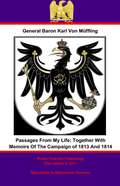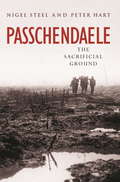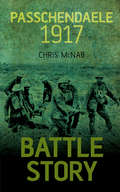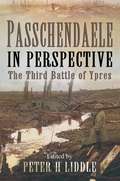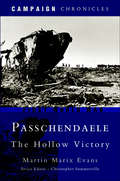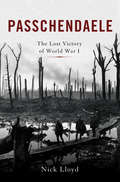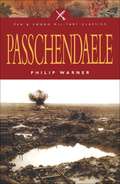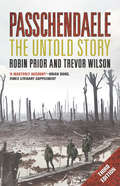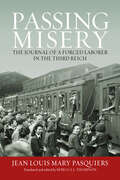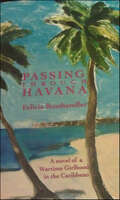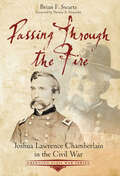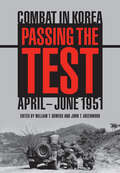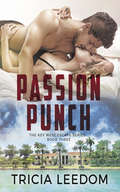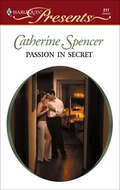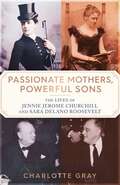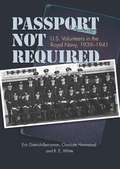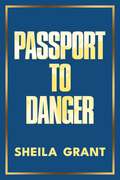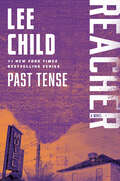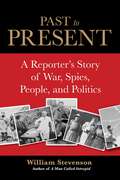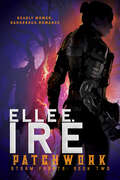- Table View
- List View
Passages From My Life; Together With Memoirs Of The Campaign of 1813 And 1814
by Pickle Partners Publishing Colonel Philip Yorke General Freiherr Baron Friedrich Karl Ferdinand Von MüfflingThis ebook is purpose built and is proof-read and re-type set from the original to provide an outstanding experience of reflowing text for an ebook reader. Baron von Müffling was an eye-witness to some of the most decisive events of the Napoleonic Wars, born into a noble family he went into the Prussian service, and saw action in the early campaigns of the Revolutionary wars in Holland and Belgium, during which he said he learned very little. He was party to the birth of the famed Prussian General staff and comments of the different personalities such as Scharnhorst, Gneisenau and to a lesser extent Massenbach. On a less happy note he was also a member of the Prussian army that was destroyed by Napoleon in 1806, and notes with some regret of the bumbling planning, ancient commanders and ineffective tactics used. After spending some time kicking his heels away from Prussia, where he might be a liability due to his anti-French views, the collapse of the Grande Armée in 1812 offers a chance for further service and liberation of his country. Attached to the army of Silesia and Blücher for the campaigns of 1813 and 1814, during which he and his countrymen fight their way across Europe into the heart of France. He comments on the battles of Lützen, Bautzen, and the battle of Nations at Leipzig, the strained relationships within the allied headquarters and the deeds of hard fighting and long marches that the Russian and Prussian soldiers make under Blücher. His comments on the 1814 campaign in France are particularly interesting as he was at the heart of the action, and at the side of the conductors of the campaign from the Allied side. He is quick to take issue with erroneous statements made at the time, and by later commentators as to the decisions made and the actions taken. Müffling was allowed little respite after the peace of 1814, plunging back into the fray in 1815 as the Prussian liaison officer at the Duke of Wellington's headquarters. Vivid details and important facts are recounted with extreme modesty, and unlike staff-officers of later years his place on the battlefield at the Duke's side was one of grave danger as the Anglo-Dutch army struggled to hold on to the ridge at Waterloo. His own action was indeed decisive, in two incidents, the first in directing the Prussian reinforcements to the right of the hard-pressed allied line, and secondly in bringing up two British cavalry brigades to take part in the final assault on the French lines. He was appointed the Governor of Paris, a particularly tricky job given the recent struggles and the large numbers of armed men roaming the city, which he dispatched with aplomb. Müffling would go on to many important postings in the Prussian army, and even as an international mediator. An excellent read, full of details of how the Napoleonic Wars was fought and the personalities that bought down the Napoleonic colossus. Author - General Baron Friedrich Karl Ferdinand von Müffling - (1775-1851) Editor - Colonel Philip Yorke (1799-1874) Text taken, whole and complete, from the edition published in 1853, London, by Richard Bentley Original - 520 pages. Linked TOC
Passchendaele
by Peter Hart Nigel SteelIn the autumn of 1917, after years of stalemate at Ypres, the British and French armies launched a massive offensive to take Passchendaele Ridge. Following an intensive bombardment, the Allies began their attack, but the low ground between the lines had been churned into a quagmire, and the attack was literally bogged down.All surprise had been lost, and the German defence in depth was well organised. For the first time the Germans used mustard gas, while German planes flew low to strafe the British infantry with machine guns. After two and a half months the British finally took the ridge they had been aiming for, but at the cost of over 300,000 Allied lives. German losses in the offensive were estimated at 260,000.Based on the archival holdings at the Imperial War Museum, this book gathers together a wealth of material about this horrific offensive. A history to appeal to the scholar and the general reader alike.
Passchendaele
by Peter Hart Nigel SteelIn the autumn of 1917, after years of stalemate at Ypres, the British and French armies launched a massive offensive to take Passchendaele Ridge. Following an intensive bombardment, the Allies began their attack, but the low ground between the lines had been churned into a quagmire, and the attack was literally bogged down.All surprise had been lost, and the German defence in depth was well organised. For the first time the Germans used mustard gas, while German planes flew low to strafe the British infantry with machine guns. After two and a half months the British finally took the ridge they had been aiming for, but at the cost of over 300,000 Allied lives. German losses in the offensive were estimated at 260,000.Based on the archival holdings at the Imperial War Museum, this book gathers together a wealth of material about this horrific offensive. A history to appeal to the scholar and the general reader alike.
Passchendaele
by Robin Prior Trevor WilsonNo conflict of the Great War excites stronger emotions than the war in Flanders in the autumn of 1917, and no name better encapsulates the horror and apparent futility of the Western Front than Passchendaele. By its end there had been 275,000 Allied and 200,000 German casualties. Yet the territorial gains made by the Allies in four desperate months were won back by Germany in only three days the following March. The devastation at Passchendaele, the authors argue, was neither inevitable nor inescapable; perhaps it was not necessary at all. Using a substantial archive of official and private records, much of which has never been previously consulted, Trevor Wilson and Robin Prior provide the fullest account of the campaign ever published.The book examines the political dimension at a level which has hitherto been absent from accounts of "Third Ypres." It establishes what did occur, the options for alternative action, and the fundamental responsibility for the carnage. Prior and Wilson consider the shifting ambitions and stratagems of the high command, examine the logistics of war, and assess what the available manpower, weaponry, technology, and intelligence could realistically have hoped to achieve. And, most powerfully of all, they explore the experience of the soldiers in the light-whether they knew it or not-of what would never be accomplished.
Passchendaele
by Robin Prior Trevor WilsonNo conflict of the Great War excites stronger emotions than the war in Flanders in the autumn of 1917, and no name better encapsulates the horror and apparent futility of the Western Front than Passchendaele. By its end there had been 275,000 Allied and 200,000 German casualties. Yet the territorial gains made by the Allies in four desperate months were won back by Germany in only three days the following March. The devastation at Passchendaele, the authors argue, was neither inevitable nor inescapable; perhaps it was not necessary at all. Using a substantial archive of official and private records, much of which has never been previously consulted, Trevor Wilson and Robin Prior provide the fullest account of the campaign ever published.The book examines the political dimension at a level which has hitherto been absent from accounts of "Third Ypres." It establishes what did occur, the options for alternative action, and the fundamental responsibility for the carnage. Prior and Wilson consider the shifting ambitions and stratagems of the high command, examine the logistics of war, and assess what the available manpower, weaponry, technology, and intelligence could realistically have hoped to achieve. And, most powerfully of all, they explore the experience of the soldiers in the light--whether they knew it or not--of what would never be accomplished.
Passchendaele 1917
by Chris McnabThe Battle of Passchendaele has come to epitomize the mud and blood of the First World War. Passchendaele is perhaps one of the most iconic campaigns of the First World War, coming to symbolize the mud and blood of the battlefield like no other. Fought for over three months under some of the worst conditions of the war, fighting became bogged down in a quagmire that made it almost impossible for any gains to be made. In this Battle Story, Chris McNab seeks to lift the battle out of its controversy and explain what really happened and why. Complete with detailed maps and photographs, as well as fascinating facts and profiles of the leaders, this is the best introduction to this legendary battle.
Passchendaele in Perspective: The Third Battle of Ypres
by Peter H. LiddlePasschendaele In Perspective explores the context and real nature of the participants experience, evaluates British and German High Command, the aerial and maritime dimensions of the battle, the politicians and manpower debates on the home front and it looks at the tactics employed, the weapons and equipment used, the experience of the British; German and indeed French soldiers. It looks thoroughly into the Commonwealth soldiers contribution and makes an unparalleled attempt to examine together in one volume specialist facets of the battle, the weather, field survey and cartography, discipline and morale, and the cultural and social legacy of the battle, in art, literature and commemoration. Each one of its thirty chapters presents a thought-provoking angle on the subject.They add up to an unique analysis of the battle from Commonwealth, American, German, French, Belgian and United Kingdom historians. This book will undoubtedly become a valued work of reference for all those with an interest in World War One.
Passchendaele: The Hollow Victory (Campaign Chronicles)
by Martin Matrix EvansPasschendaele is one of the most evocative names associated with the Great War. For over 80 years, the battle has epitomized pointless slaughter on an unimaginable scale. The bare statistics are shocking in themselves - the British, French and German armies suffered over half a million casualties between July and November 1917. Ever since, the image of hapless soldiers struggling through the mud and the shellfire has come to represent the futility of trench warfare and the incompetence of their commanders. Yet, as Martin Marix Evans demonstrates in this gripping and perceptive reassessment, some common assumptions about the course of the battle - and the ways in which it was fought - are mistaken and should be looked at again.
Passchendaele: The Lost Victory of World War I
by Nick LloydThe definitive account of Passchendaele, one of the most influential and tragic battles of the First World WarPasschendaele. The name of a small, seemingly insignificant Flemish village echoes across the twentieth century as the ultimate expression of meaningless, industrialized slaughter. In the summer of 1917, upwards of 500,000 men were killed or wounded, maimed, gassed, drowned, or buried in this small corner of Belgium.On the centennial of the battle, military historian Nick Lloyd brings to vivid life this epic encounter along the Western Front. Drawing on both British and German sources, he is the first historian to reveal the astonishing fact that, for the British, Passchendaele was an eminently winnable battle. Yet the advance of British troops was undermined by their own high command, which, blinded by hubris, clung to failed tactics. The result was a familiar one: stalemate. Lloyd forces us to consider that trench warfare was not necessarily a futile endeavor, and that had the British won at Passchendaele, they might have ended the war early, saving hundreds of thousands, if not millions, of lives. A captivating narrative of heroism and folly, Passchendaele is an essential addition to the literature on the Great War.
Passchendaele: The Story Behind The Tragic Victory Of 1917 (Pen & Sword Military Classics)
by Philip WarnerNearly ninety years ago, on 31st July 1917, the small Belgian village of Passchendaele became the focus for one of the most gruelling, bloody and bizarre battles of World War 1. By 6th November, when Passchendaele village and the ridge were captured, over half a million British, French, Canadians, Australians, New Zealanders and Germans had become casualties. Philip Warner, the noted historian of twentieth-century warfare and the author of over fifty books on military history, many published by Pen & Sword, has skilfully brought together all the elements of this horrific campaign - the historical background, personal accounts, strategies and tactics, the personalities and the political manoeuvres. He investigates the issues which had a crucial effect on the course of the battle, including the mutinous state of the French army, the bombardment which destroyed the drainage system, Field Marshal Sir Douglas Haig's determination to continue operations despite the appalling weather and ground conditions, and the stormy relationship between Haig and Lloyd George. However, it is the determined fighting ability and the bravery of the allied soldiers, rather than the tactical plans of the commanders, that dominate this detailed and totally absorbing account of the harrowing four-month campaign called the Battle of Passchendaele.Passchendaele is a masterly and timely analysis of one of the most important battles in history.
Passchendaele: The Untold Story; Third Edition
by Robin Prior Trevor WilsonNo conflict of the Great War excites stronger emotions than the war in Flanders in the autumn of 1917, and no name better encapsulates the horror and apparent futility of the Western Front than Passchendaele. By its end there had been 275,000 Allied and 200,000 German casualties. Yet the territorial gains made by the Allies in four desperate months were won back by Germany in only three days the following March. The devastation at Passchendaele, the authors argue, was neither inevitable nor inescapable; perhaps it was not necessary at all. Using a substantial archive of official and private records, much of which has never been previously consulted, Trevor Wilson and Robin Prior provide the fullest account of the campaign ever published. The book examines the political dimension at a level which has hitherto been absent from accounts of "Third Ypres." It establishes what did occur, the options for alternative action, and the fundamental responsibility for the carnage. Prior and Wilson consider the shifting ambitions and stratagems of the high command, examine the logistics of war, and assess what the available manpower, weaponry, technology, and intelligence could realistically have hoped to achieve. And, most powerfully of all, they explore the experience of the soldiers in the light--whether they knew it or not--of what would never be accomplished.
Passing Misery: The Journal of a Forced Laborer in the Third Reich
by Jean Louis Mary PasquiersThe Service du Travail Obligatoire (STO), or the Compulsory Work Service, program remains one of the most unsettling features of France’s history in World War II. Established by the Vichy government in 1943, this initiative saw young men provide forced labor, primarily within France or Germany, in support of the Third Reich’s war effort. In this illuminating translation of the journal of Jean Louis Mary Pasquiers, a former teacher and forced laborer from Paris, Passing Misery documents Pasquiers’ life within war-torn Europe, in unwilling service to the Nazi regime. By exploring Pasquiers' personal story, this book offers an unrivalled insight into the complexities of war-time collaboration, resistance, and moral culpability, shedding light on one of the darkest chapters in European history.
Passing Through Havana: A Novel of a Wartime Girlhood in the Caribbean
by Felicia RosshandlerFor some Europeans fleeing the gathering Holocaust on the Continent, the bright wash of Cuba's azure skies and sparkling sands offered a last refuge. For Suze, a strong, seductive woman who saved her family from Hitler's Jewish witch-hunt with her Magda Lupescu-an appeal and wile, Havana meant life and freedom after their determined, often desperate, flight across Europe and the Atlantic.But for Claudia, Suze's blond, blue-eyed adolescent daughter, the Latin tempo and allure of upper-class Catholic society are too tempting and draw her away from her parents and their expatriate community and into the friendships and parties of Cuba's pre-Castro gilded set. Her Aryan features and skill at "passing" allow her to recast her identity for the circumstance, and each time deny her own feeling of rootlessness.One evening, at a party at the Havana Yacht Club, she falls in love with a young German, who does not know she is Jewish, and Claudia is caught up in a taboo relationship both frightening and erotic.Claudia's story explores another side of the Holocaust: about Jews who escaped to exotic places only to rediscover their heritage of homelessness; and about both the psychology of self-hate and the inner strength of individuals who survive. Novelist and screenwriter Edmundo Desnoes sums it up this way: "Is love or is history the answer? If you read Passing Through Havana you will discover the price of both."
Passing Through the Fire: Joshua Lawrence Chamberlain in the Civil War (Emerging Civil War Series)
by Brian F. SwartzAs the brigade he commanded attacked a Confederate battery on a hill outside Petersburg in July 1864, a bursting shell blew Col. Joshua L. Chamberlain from the saddle and wounded his horse. After the enemy battery skedaddled, the brigade took the hill and dug in, and up came supporting Union guns. Chamberlain figured the day’s fighting ended. Then an unidentified senior officer ordered his brigade to charge and capture the heavily defended main Confederate line. Chamberlain protested the order, then complied, taking his men forward—until a bullet slammed through his groin and left him mortally wounded. Miraculously surviving a nighttime battlefield surgery, he returned home to convalesce as a brigadier general following an impromptu deathbed promotion. Struggling with pain and multiple surgeries, Chamberlain debated leaving the army or returning to the fight. His decision affected upcoming battles, his family, and the rest of his life. Passing Through the Fire: Joshua Lawrence Chamberlain in the Civil War chronicles Chamberlain’s swift transition from college professor and family man to regimental and brigade commander. A natural leader, he honed his fighting skills at Shepherdstown and Fredericksburg. Praised by his Gettysburg peers for leading the 20th Maine Infantry’s successful defense of Little Round Top—an action that would eventually earn him Civil War immortality—Chamberlain experienced his most intense combat after arriving at Petersburg. Drawing on Chamberlain’s extensive memoirs and writings and multiple period sources, historian Brian F. Swartz follows Chamberlain across Maryland, Pennsylvania, and Virginia while examining the determined warrior who let nothing prevent him from helping save the United States.
Passing the Test: April–June 1951 (Combat in Korea)
by William T. Bowers and John T. Greenwood“Passing the Test completes the story of ground combat during the Chinese offensives of 1951 . . . This is combat history at its best.” —Lt. General Julius W. Becton, Jr. (Ret.)For US and UN soldiers fighting the Korean War, the spring of 1951 was brutal. The troops faced a tough and determined foe under challenging conditions. The Chinese Spring Offensive of 1951 exemplified the hardships of the war, as the UN forces struggled with the Chinese troops over Line Kansas, a phase line north of the 38th parallel, in a conflict that led to the war’s final stalemate. Passing the Test: Combat in Korea, April–June 1951 explores the UN responses to the offensive in detail, looking closely at combat from the perspectives of platoons, squads, and the men themselves. Editors William T. Bowers and John T. Greenwood emphasize the tactical operations on the front lines and examine US and UN strategy, as well as the operations of the Communist Chinese and North Korean forces. They employ a variety of sources, including interviews conducted by US Army historians within hours or days of combat, unit journals, and after-action reports, to deliver a comprehensive narrative of the offensive and its battles. Passing the Test highlights the experiences of individual soldiers, providing unique insights into the chaos, perseverance, and heroism of war. The interviews offer a firsthand account that is untainted by nostalgia and later literature, illuminating the events that unfolded on the battlefields of Korea.“Serves as a monument to the fighting spirit of the individual soldier.” —Army
Passion Punch: Key West Escape Book Three (The Key West Escape Series #3)
by Tricia Leedom"There is a lot be said in favor of a talented author bringing a combination of romance, heat, and adventure to what otherwise could be a very tired genre. Leedom brings it all!" When April Linus’ best friends find themselves in trouble with the Miami Mafia, the former heiress turns to an even more dangerous criminal for help… her father. Not an easy decision for the young, single mother who found herself pregnant at nineteen and forced to choose between her trust fund and having a baby. April’s father agrees to loan her the money, if she moves home for a few months so he can get to know his grandchild. Before she can decide what to do, she comes face to face with the last man she ever expected to see again… her father’s former bodyguard who disappeared five years ago after she slept with him. Black Ops operative Jonas Ostergaard made a nearly fatal mistake the last time he was in Key West. After working his way into Philip Linus’ circle of trust, Jonas let the Arms Dealer’s beautiful, kindhearted daughter distract him from his mission. He was yanked off the job by his superiors, but now he’s back to stop Linus from selling a dangerous new technology on the black market. Needing to prove himself to save his job, Jonas is determined to keep his distance from April this time. But when he suspects she knows more about her father’s illegal business dealings than she admits, he’s torn between protecting her and uncovering the truth.Passion ignites when April and Jonas end up on the run dodging arms dealers in the steamy Amazon rainforest, but April wonders what kind of relationship she could have with a man who has more secrets than she does. A man who could disappear at any moment and leave her heart in tatters. Trapped between loyalty to her father and a new allegiance with the man she’s falling in love with, April realizes none of it will matter if they don’t escape the jungle alive.The Key West Escape Series1. Rum Runner 2. Bahama Mama 3. Passion Punch
Passion in Secret (Mistress To A Millionaire Ser.)
by Catherine SpencerWill the truth finally set them free—or drive them apart forever? Years ago, when he was nineteen, Jake Harrington had loved Sally with a passion. But he had been tricked into marrying someone else. Now free of that marriage, navy pilot Jake wants a second chance with Sally. Though the timing is wrong and reputations are at stake, after so much wasted time they finally confess their feelings—secretly! Keeping their passion private brings its own tensions, but the revelations of the lies and secrets that caused their past breakup only push them further into each other&’s arms. Until Sally reveals one final secret—and it&’s the one thing Jake just can&’t forgive. . . .
Passion's Timeless Hour
by Vivian Knight-JenkinsSworn to defend the Confederacy, Alexander would let nothing stop him from completing his secret mission--until a dedicated army nurse stole his heart. Rebecca worked on the killing fields of Vietnam--until a freak accident propelled her back to Civil War times. But his growing love cooled when he began to suspect that the spirited young woman might be a Yankee spy.
Passionate Mothers, Powerful Sons: The Lives of Jennie Jerome Churchill and Sara Delano Roosevelt
by Charlotte GrayA captivating biography of two famous women whose sons, Winston Churchill and Franklin D Roosevelt, would change the course of the 20th century—by award-winning historian Charlotte Gray. Born into upper class America in the same year, 1854, Sara Delano and Jennie Jerome refused to settle into predictable, sheltered lives as little-known wives to prominent men. Instead, both women concentrated their energies on enabling their sons to reach the epicentre of political power on two continents. In the mid-19th century, the British Empire was at its height, France&’s Second Empire flourished and the industrial vigour of the USA was catapulting the republic towards the Gilded Age. Sara and Jennie, raised with privilege but subject to the constraints of women&’s roles at the time, learned how to take control of their destinies, Sara in the prosperous Hudson Valley and Jennie in the glittering world of Imperial London. Yet their personalities and choices were dramatically different. A vivacious extrovert, Jennie married Lord Randolph Churchill, rising politician and scion of a noble British family. Her deft social and political manoeuvrings helped not only her mercurial husband but, once she was widowed, her ambitious son, Winston. By contrast, deeply conventional Sara Delano married a man as old as her father. But once widowed, she made Franklin, her only child, the focus of her existence. Thanks in large part to her financial support and to her guidance, Franklin acquired the skills he needed to become a successful politician.Set against one hundred years of history, Passionate Mothers, Powerful Sons is a study in loyalty and resilience. Gray argues that Jennie and Sara are too often presented as lesser figures rather than two remarkable individuals who were key in shaping the characters of the sons who adored them, and preparing them for leadership on the world stage. A masterful biographer and acclaimed historian, Charlotte Gray breathes new life into Sara and Jennie. Impeccably researched and filled with intriguing social insights, Passionate Mothers, Powerful Sons offers a fascinating and fulsome portrait of how leaders are not just born but made.
Passport Not Required
by Ronald White Eric Dietrich-Berryman Charlotte HammondBefore America entered World War II, twenty-two U.S. citizens went to England and volunteered with the Royal Navy. Commissioned between September 1939 and November 1941, they fought in the Battle of the Atlantic and on a variety of fronts. While the history of Americans serving in the Royal Air Force is well known, the story of these naval volunteers has not been previously told. Most trained at the Royal Naval College in Greenwich, but since foreign military service was against U.S. law, their names were never made public. Now, after years of research, their identities and the details of their contributions can be made known.
Passport to Danger
by Sheila GrantPassport to Danger is a thrilling story of espionage during the height of the Cold War with the action racing from posh office towers in New York City to a crescendo in the resort towns of Cuernavaca and Acapulco with stakes of nuclear proportions.The CIA-backed invasion of the Bay of Pigs had been repelled by Russian-armed Cuba, the Berlin Wall had been erected separating East from West, and the Cuban Missile Crisis had brought the US and Russia one launch button away from World War III. The arms race between the two world powers was at a fevered pitch and the Cold War was at its apex. It is against this backdrop that supermodel Elizabeth Lamont is recruited by the CIA after a case of mistaken identity and thrust into the conflict as a double agent impersonating notorious KGB operative Nicola Neumann. Elizabeth&’s mission is to reach Anton Sobokov, who defected from Russia and became a leading US nuclear physicist. Now he&’s being held by the KGB in a house in Cuernavaca, Mexico, waiting to be transported to Cuba by plane and Moscow by boat. While impersonating Nicola Neumann, Elizabeth must gain access to the house and obtain the encrypted code to Sobokov&’s work before it falls into the hands of the Soviets. Should she fail, the balance of power could shift from the US to Russia. With a growing affection for Steve Brenner, a nuclear scientist and close friend of the perceived traitor, Sobokov, the stakes become personal as Elizabeth must prevent her emotions from sabotaging her mission—even if the answers she uncovers devastate the man she may be growing to love.
Past Remembering
by Catrin CollierJack-Knifed' is the first novel featuring DCI Martin Phelps and his team, based in the world-famous and vibrant Cardiff Bay. Mark Wilson, a decent, well-liked gay man, lives alone in a beautiful house in Cardiff. One Saturday evening, his closest friends go to his house for an evening of drinks and catching-up. Finding no answer, the concerned friends break in - to a horrific murder scene. For Mark Wilson has been brutally, sadistically murdered in his own home. As DCI Phelps investigates, Mark's traumatic early life is revealed. Was his killer someone from his past? Was his sexuality a motive? What about his violent, homophobic father - a man who has already killed more than once ... Meanwhile, Mark's estranged sister Amy broods on the hatred she has for her brother, blaming him for turning their father into a killer. As she sinks further in to the depths of drug addiction, who's to say what her next move will be? As the body count rises, Phelps and his sergeant, Matt Pryor, soon realise they are on the trail of a serial killer ...
Past Tense: A Jack Reacher Novel (Jack Reacher #23)
by Lee Child#1 NEW YORK TIMES BESTSELLER • Don&’t miss the hit streaming series Reacher!Family secrets come back to haunt Jack Reacher in this electrifying thriller from &“a superb craftsman of suspense&” (Entertainment Weekly).Jack Reacher hits the pavement and sticks out his thumb. He plans to follow the sun on an epic trip across America, from Maine to California. He doesn&’t get far. On a country road deep in the New England woods, he sees a sign to a place he has never been: the town where his father was born. He thinks, What&’s one extra day? He takes the detour.At the same moment, in the same isolated area, a car breaks down. Two young Canadians had been on their way to New York City to sell a treasure. Now they&’re stranded at a lonely motel in the middle of nowhere. The owners seem almost too friendly. It&’s a strange place, but it&’s all there is.The next morning, in the city clerk&’s office, Reacher asks about the old family home. He&’s told no one named Reacher ever lived in town. He&’s always known his father left and never returned, but now Reacher wonders, Was he ever there in the first place? As Reacher explores his father&’s life, and as the Canadians face lethal dangers, strands of different stories begin to merge. Then Reacher makes a shocking discovery: The present can be tough, but the past can be tense . . . and deadly.This edition includes an excerpt of Lee Child&’s novel Blue Moon.
Past to Present: A Reporter's Story of War, Spies, People, and Politics
by William StevensonWilliam Stevenson may be best known for his friendship with and books about another William Stephenson, otherwise known as Intrepid, whose spy network and secret diplomacy changed the course of history. Originally published in 1976, A Man Called Intrepid sold over 2 million copies and quickly became a New York Timesbestseller. However, readers will be just as fascinated by his life’s story and adventures. Stevenson chronicles the major events of his life, beginning with his daring and dangerous time as a naval pilot during WWII flying a multitude of legendary aircraft—Stringbag, Tiger Moth, Seafire, Hellcats—and learning various maneuvers in the skies enroute to Russia, over England, Canada, Scotland, and the Pacific. After the war, still yearning for adventure, he returns to Canada to write for The Toronto Daily Star, where he again meets William Stephenson (aka Intrepid) on assignment and develops a lifelong friendship. Stevenson travels the globe, visiting Hong Kong, Delhi, Kashmir, Kenya, Kuala Lumpur, Moscow, Thailand, and many other exotic locals, where he meets iconic figures, such as Ian Fleming, Prime Minister Nehru, Ho Chi Minh, Chiang Kai-shek, Mao Tse-tung, Zhou Enlai, Tito, Khrushchev, and the King of Thailand among others. Privy to confidential information, full of international intrigue, Stevenson is a living embodiment of modern history. Past to Present, with story after amazing story to tell, will leave the reader breathless.
Patchwork (Storm Fronts #2)
by Elle E. IreStorm Fronts: Book TwoEmpath Kelly LaSalle means everything to cybernetic soldier Vick Corren—and Kelly deserves a partner who can love her in a romantic way. For the first time since receiving her robotic enhancements and an AI that makes her faster and stronger than the average merc, Vick thinks she can be that person. Vick wants Kelly for life, and she’ll do whatever it takes to be worthy. A holiday on a tropical planet seems the perfect time for Vick to demonstrate her commitment. And she has big plans. But the best intentions unravel when they’re pursued by a rival mercenary company that wants Vick’s technology—with or without her cooperation. A competitor for Kelly’s affection is determined to tear them apart, and a lover from Vick’s past has depraved plans of her own. Vick might not be able to save their lives without giving herself over to the machine she’s trying so hard to transcend.
